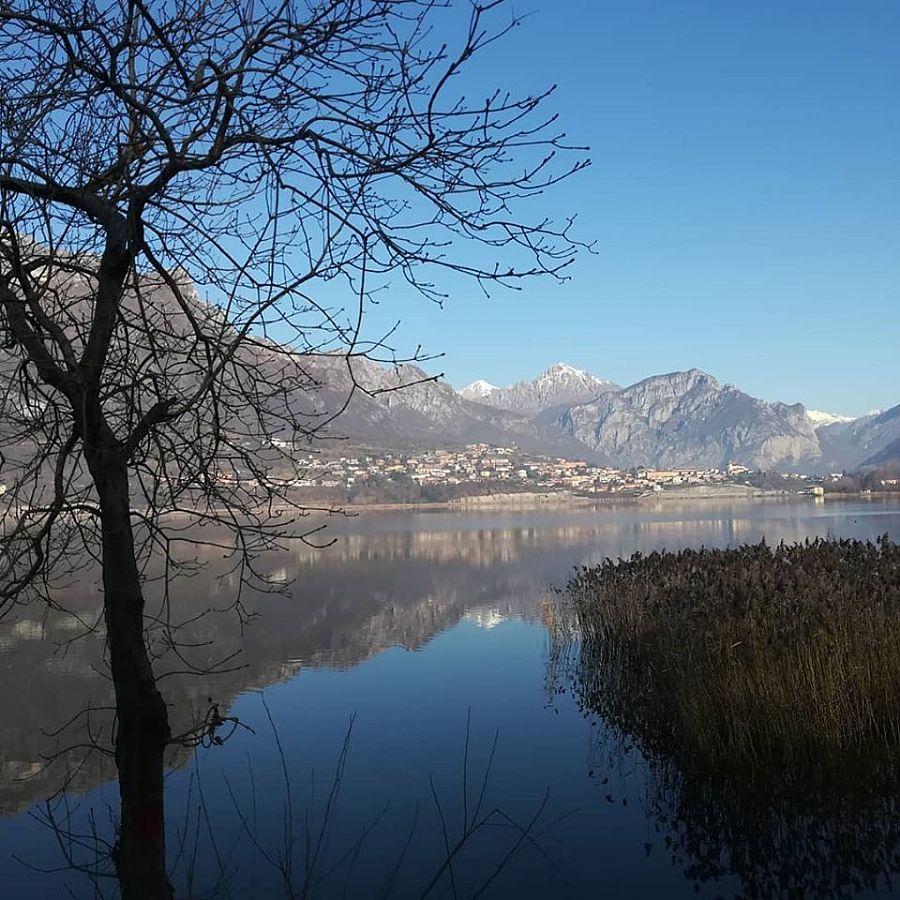Milano

Milan is the sleek and sophisticated city of northern Italy, the center of fashion and finance. Long a crossroads trading center, it is cosmopolitan but focuses more on business than beauty and much of the city is rather nondescript. There are some gorgeous exceptions -the Cathedral, for example- but Milano's focus, first and foremost, is industry.
Founded by the Gauls in 400 BC, it was conquered by the Romans in 220 BC and named Mediolanum (in the middle of the plain), which was later morphed into "Milano". It was turned into the Roman capital for the western empire by Caesar Augustus. Taken by the Lombards in 539, it also fell under Church rule, became an independent municipality in 1117, was seized by the Visconti family in 1277 and retained as a noble duchy for centuries, first by the Visconti and then the Sforza family, who turned it into a more powerful, enriched metropolis. It went through a period of decline, oppression and plague, then a resurgence thanks to thewealthy Borromeo family then the Hapsburg dynasty. It was mostly destroyed in World War II, then rebuilt from the ashes to become the country's center of finance, media, design and fashion.
Hip, urbane and stylish, Milan is bustling and businesslike rather than the relaxed and cultured "dolce vita" you find in other places; but there's no denying it holds its appeal and flaunts it well. This is where designers flock, models make it big (or break it), and is a hub between northern Italy, Switzerland, and France. Cutting-edge shops, upscale boutiques, nouveau style eateries, swanky bars and discos, this is the scene in Milan.
Any visit should start at the sugar-coated cathedral, one of the large Gothic churches in Europe and one of the most resplendent. Its fanciful white facade is an incredible sight, but a trip to the roof is even more breathtaking, where you can stand among the spires and statues and get a good "up close" look at the gargoyles, as well as glimpses of the Alps in the distance. Next up is the Castello Sforzesco (also known as the Sforza Castle), which has seen dramatic events, was demolished, rebuilt, restored, and reborn into a landmark monument. Built in 1360 by the Visconti, destroyed less than 100 years later,it rebuilt shortly after by the Sforza and turned into a ducal palace and noble residence. It houses several museums, including the Art Gallery with 230 works by northern Italian masters.
The Museum of Ancient Art holds many early Christian pieces and ancient art, but its biggest draw is the uncompleted statue by Michelangelo called the Rondanini Pieta'. This poignant and powerful sculpture was never finished; Michelangelo worked on it up until his dying day, the last piece of marble that his scalpel touched, and a work that was intended to grace his own tomb. It is fascinating to see, because of its roughness, the marks of the sculptor's tools visible, the emerging vision of the artist still emerging from the stone. In the Castello, you'll also find an Egyptian museum and one dedicated to woodworking and furnishings. Of course, beyond the halls and galleries, a tour around the castle itself and its ramparts is a must!
Parco Sempione at the Castello is the city's version of Central Park, the former ducal garden of more than 100 acres was once 7 times larger and a hunting grounds for the dukes. Stroll the paths that lead among the various gardens and include ponds and creeks for a break from the bustle of the city.
Milan is also renowned by its opulent opera house, La Scala, which opened in 1778. It is still the premier theater in Italy, and one of the most recognized in Europe. Its storied reputation, plush jewelry-box interior and incredible acoustics attract the cream of the crop in the opera world, and provide a perfect, special evening for spectators.
The glass-roofed Galleria and other museums will keep you busy, and of course a trip to Milan isn't complete without a visit to the shopping streets to gaze in the windows of the world's leading designers' shops. Enjoy an aperitivo in the place that popularized the ritual, dine on ossobuco or risotto, the city's signature dishes, and spend some time people watching to see what the latest styles are at the moment they emerge from the workshops!
Rent a holiday house in Lombardy and travel like a local.

 Amalfi Coast
Amalfi Coast Sorrento Coast
Sorrento Coast Tuscany
Tuscany Cilento National Park
Cilento National Park Lake Como
Lake Como Rome and Latium
Rome and Latium Umbria
Umbria Capri and Ischia
Capri and Ischia Venice
Venice Puglia (Apulia)
Puglia (Apulia) Liguria
Liguria Sicily
Sicily Lake Maggiore
Lake Maggiore Lombardy
Lombardy Sardinia
Sardinia Lake Garda
Lake Garda Abruzzo and Marche
Abruzzo and Marche Calabria
Calabria

